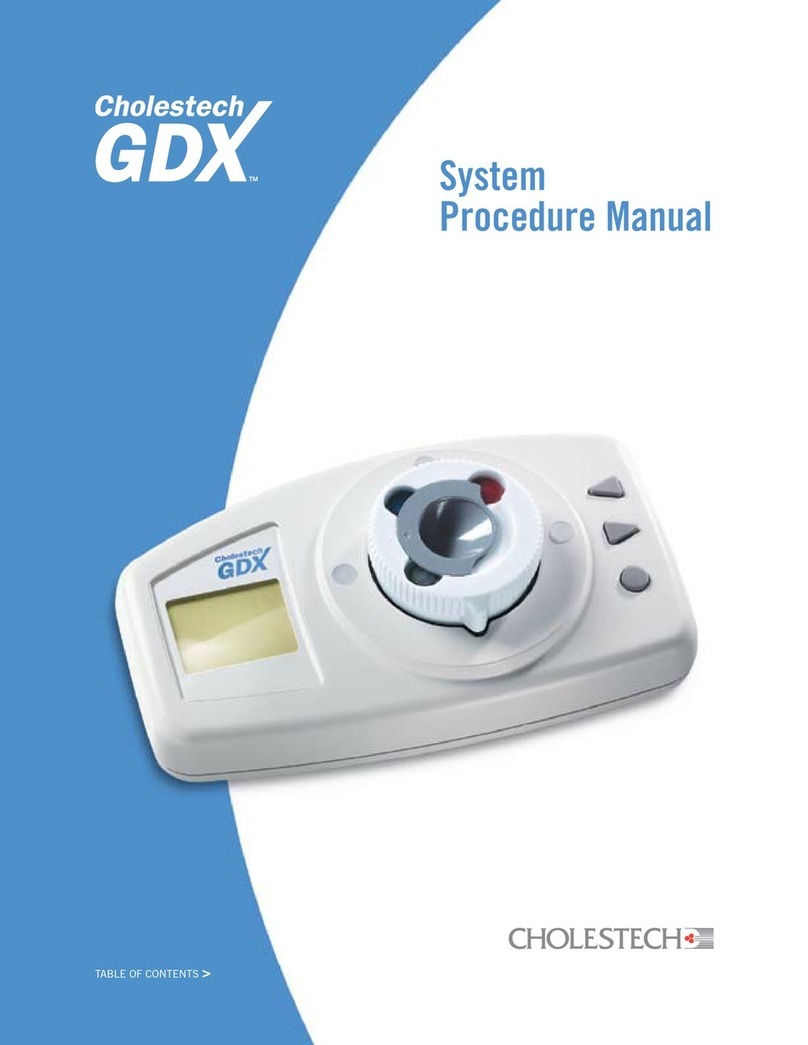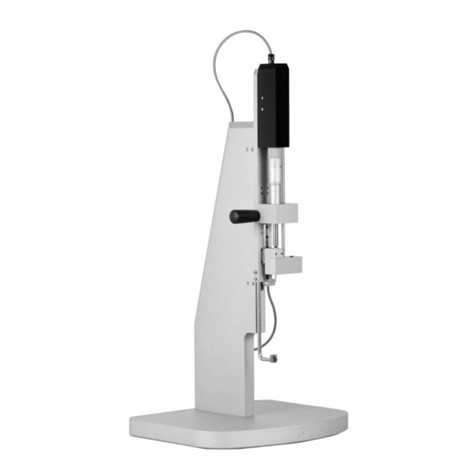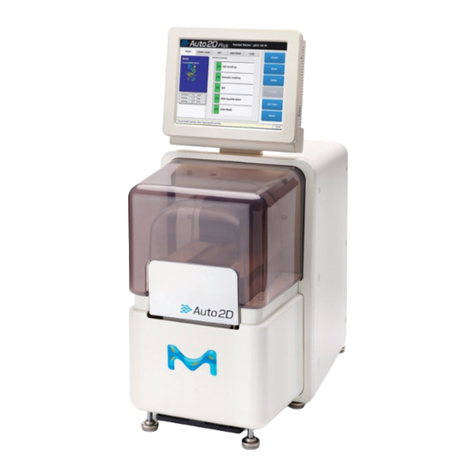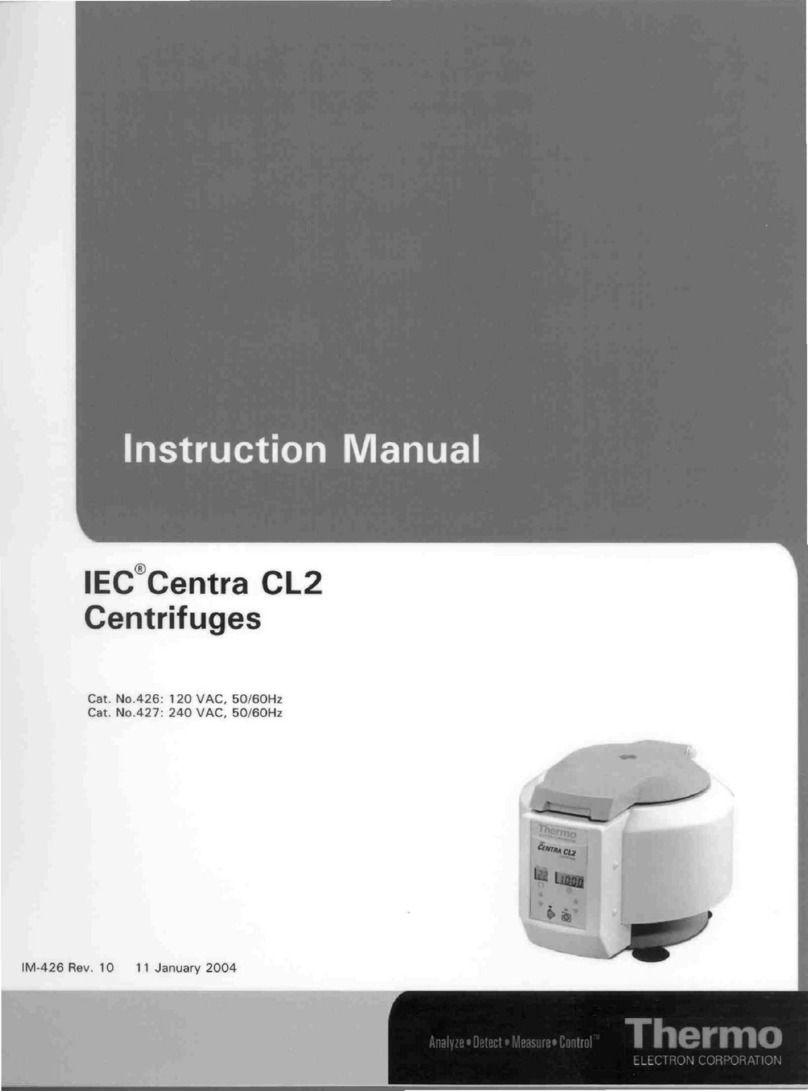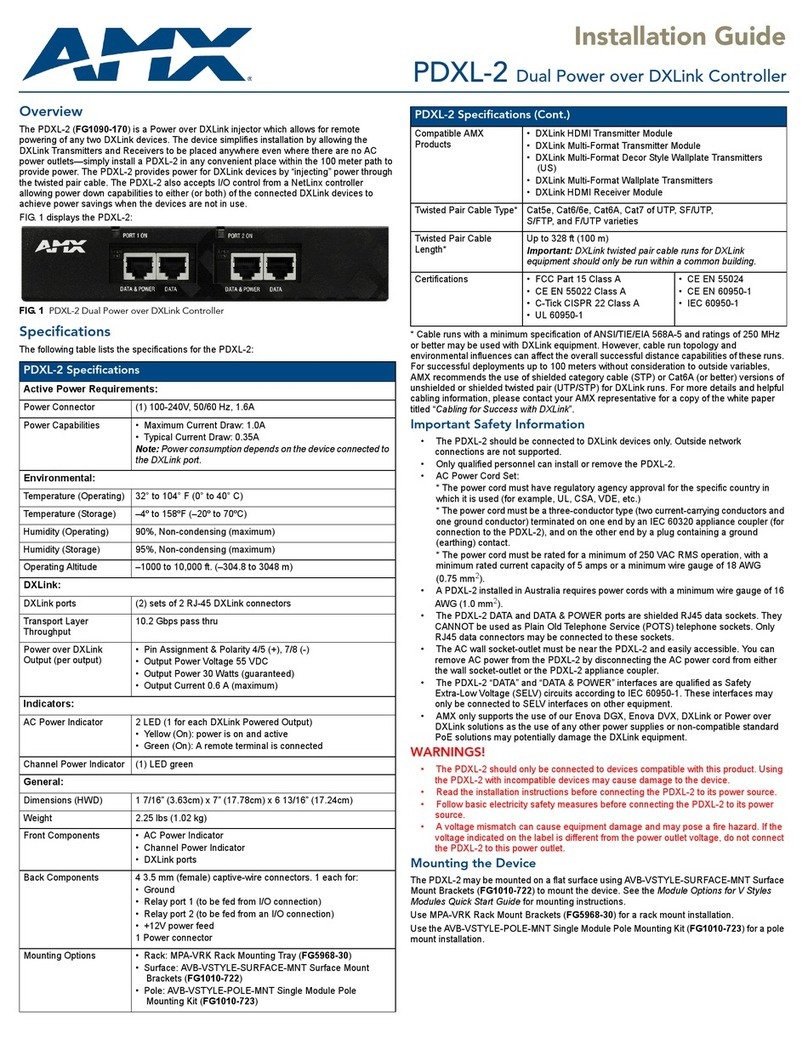Cholestech LDX User manual

<TABLE OF CONTENTS
System
Procedure Manual

iTABLE OF CONTENTS
Cholestech LDX System Procedure Manual
Foreword – Procedure Manual Overview . . . . . . . . . . . . . . . . . . . . . . . . . . . . . . . .iii
Introduction – Overview of a Quality Assurance Program . . . . . . . . . . . . . . . . . . . .iv
1.0 Setup and Maintenance
1.1 Introduction . . . . . . . . . . . . . . . . . . . . . . . . . . . . . . . . . . . . . . . . . . . . . . . . . . . . . .2
1.2 Cholestech LDX Optics Check Cassette . . . . . . . . . . . . . . . . . . . . . . . . . . . . . . . . . .2
1.3 Optics Check Cassette Test Procedure . . . . . . . . . . . . . . . . . . . . . . . . . . . . . . . . . .2
1.4 Environmental Requirements . . . . . . . . . . . . . . . . . . . . . . . . . . . . . . . . . . . . . . . . .3
1.5 Laboratory Temperature Records . . . . . . . . . . . . . . . . . . . . . . . . . . . . . . . . . . . . . .3
1.6 Instrument History Record . . . . . . . . . . . . . . . . . . . . . . . . . . . . . . . . . . . . . . . . . . .3
1.7 Cholestech LDX System Initial Setup . . . . . . . . . . . . . . . . . . . . . . . . . . . . . . . . . . . .4
1.8 Maintenance and Cleaning of the Cholestech LDX System . . . . . . . . . . . . . . . . . . .4
1.9 Course of Action If System Becomes Inoperable . . . . . . . . . . . . . . . . . . . . . . . . . . .5
1.10
Procedure Sign-Off
. . . . . . . . . . . . . . . . . . . . . . . . . . . . . . . . . . . . . . . . . . . . . . . . .6
1.11 Reference(s) and Bibliography . . . . . . . . . . . . . . . . . . . . . . . . . . . . . . . . . . . . . . . .6
2.0 Specimen Collection and Handling
2.1 Introduction . . . . . . . . . . . . . . . . . . . . . . . . . . . . . . . . . . . . . . . . . . . . . . . . . . . . .8
2.2 Fingerstick Procedure . . . . . . . . . . . . . . . . . . . . . . . . . . . . . . . . . . . . . . . . . . . . . .8
2.3
Procedure Sign-Off
. . . . . . . . . . . . . . . . . . . . . . . . . . . . . . . . . . . . . . . . . . . . . . . . .9
2.4 Venipuncture Procedure . . . . . . . . . . . . . . . . . . . . . . . . . . . . . . . . . . . . . . . . . . .10
2.5
Procedure Sign-Off
. . . . . . . . . . . . . . . . . . . . . . . . . . . . . . . . . . . . . . . . . . . . . . . .12
2.6 Reporting Results Properly . . . . . . . . . . . . . . . . . . . . . . . . . . . . . . . . . . . . . . . . . .12
2.7
Procedure Sign-Off
. . . . . . . . . . . . . . . . . . . . . . . . . . . . . . . . . . . . . . . . . . . . . . . .13
2.8 Proper Specimen Storage . . . . . . . . . . . . . . . . . . . . . . . . . . . . . . . . . . . . . . . . . . .14
2.9 Procedure to Properly Remove a Rubber Stopper from an Evacuated Tube . . . . . .15
2.10 Reference(s) and Bibliography . . . . . . . . . . . . . . . . . . . . . . . . . . . . . . . . . . . . . . .15
3.0 Quality Control
3.1 Introduction . . . . . . . . . . . . . . . . . . . . . . . . . . . . . . . . . . . . . . . . . . . . . . . . . . . . .18
3.2 Quality Control Materials . . . . . . . . . . . . . . . . . . . . . . . . . . . . . . . . . . . . . . . . . . . .18
3.3 Frequency of Testing . . . . . . . . . . . . . . . . . . . . . . . . . . . . . . . . . . . . . . . . . . . . . .18
3.4 Establishing and Calculating a Control Range . . . . . . . . . . . . . . . . . . . . . . . . . . . .19
3.5 Cholestech LDX System Quality Control Log . . . . . . . . . . . . . . . . . . . . . . . . . . . . .20
3.6 When Results Are Outside Acceptable Control Limits . . . . . . . . . . . . . . . . . . . . . .20
3.7 Quality Control Remedial Action . . . . . . . . . . . . . . . . . . . . . . . . . . . . . . . . . . . . . .20
3.8
Procedure Sign-Off
. . . . . . . . . . . . . . . . . . . . . . . . . . . . . . . . . . . . . . . . . . . . . . . .21
3.9 Reporting a Complaint . . . . . . . . . . . . . . . . . . . . . . . . . . . . . . . . . . . . . . . . . . . . .21
3.10
Procedure Sign-Off
. . . . . . . . . . . . . . . . . . . . . . . . . . . . . . . . . . . . . . . . . . . . . . . .22
3.11 Cholestech LDX System Calibration Verification and Linearity Testing . . . . . . . . . .22
3.12 Reference(s) and Bibliography . . . . . . . . . . . . . . . . . . . . . . . . . . . . . . . . . . . . . . .23
4.0 Safety
4.1 Introduction . . . . . . . . . . . . . . . . . . . . . . . . . . . . . . . . . . . . . . . . . . . . . . . . . . . . .26
4.2 Reference(s) and Bibliography . . . . . . . . . . . . . . . . . . . . . . . . . . . . . . . . . . . . . . .26
5.0 Training
5.1 Introduction . . . . . . . . . . . . . . . . . . . . . . . . . . . . . . . . . . . . . . . . . . . . . . . . . . . . .28
5.2 Cholestech LDX Training Checklist . . . . . . . . . . . . . . . . . . . . . . . . . . . . . . . . . . . .28
5.3 Certificate of Training – Fingerstick Blood Collection . . . . . . . . . . . . . . . . . . . . . . .28
5.4 Online Training . . . . . . . . . . . . . . . . . . . . . . . . . . . . . . . . . . . . . . . . . . . . . . . . . . .28
Table of Contents
TABLE OF CONTENTS >

ii TABLE OF CONTENTS
Cholestech LDX System Procedure Manual
<TABLE OF CONTENTS
6.0 Material Safety Data Sheets . . . . . . . . . . . . . . . . . . . . . . . . . . . . . . . . . . . . . . . . . . . .30
7.0 Proficiency Testing
7.1 Overview of Proficiency Testing . . . . . . . . . . . . . . . . . . . . . . . . . . . . . . . . . . . . . . .34
7.2 Proficiency Testing Agencies . . . . . . . . . . . . . . . . . . . . . . . . . . . . . . . . . . . . . . . .36
7.3 Reference(s) and Bibliography . . . . . . . . . . . . . . . . . . . . . . . . . . . . . . . . . . . . . . .36
8.0 Glossary of Terms . . . . . . . . . . . . . . . . . . . . . . . . . . . . . . . . . . . . . . . . . . . . . . . . . .38
8.1 Reference(s) and Bibliography . . . . . . . . . . . . . . . . . . . . . . . . . . . . . . . . . . . . . . .43
9.0 Master Forms . . . . . . . . . . . . . . . . . . . . . . . . . . . . . . . . . . . . . . . . . . . . . . . . . . . . .45
Optics Check Log
Temperature Chart
Instrument History Record
Information and Service Log
Initial Setup Checklist
Equipment Maintenance/Cleaning Log
Instruments In-Use Record
Patient Result Log
Patient Result Label Log No. 1
Patient Result Label Log No. 2
Quality Control Log
Quality Assurance Record
Control Range Calculation Form
Accuracy Study Data
Precision Calculation Form
Training Checklist
Certificate of Training for Fingerstick Blood Collection
Test Cassette Inserts
Test Procedure – Lipid Profile·GLU
Test Procedure – ALT

iiiFOREWORD
Cholestech LDX System Procedure Manual
<TABLE OF CONTENTS
Procedure Manual Overview
This procedure manual has been designed to instruct Cholestech LDX users in how to
comply with good laboratory practices and assist in complying with applicable regulations.
The Cholestech LDX System Procedure Manual covers:
• Setup and Maintenance: Procedure to properly run an optics check and record the
values for the Cholestech LDX System. In addition, the section provides specific
information about recording laboratory environmental conditions.
• Specimen Collection and Handling: General procedures that are applicable to obtaining
a suitable specimen and running a test on the Cholestech LDX System.
• Quality Control: Discusses laboratory activities designed to ensure that each test system
is working properly and that the test results satisfy quality standards.
• Safety: Allows you to file your safety guidelines as recommended by OSHA.
• Training: A checklist as a guideline to train personnel on the Cholestech LDX System.
After the training is completed, you may use the Certificate of Training for the
Cholestech LDX System and the Certificate of Training for Fingerstick Blood Collection to
document training.
• Material Safety Data Sheets: A copy of Cholestech Corporation’s MSDS for the
Cholestech LDX test cassettes. You can add additional MSDSs as required.
• Proficiency Testing Guidance: Discusses the importance of proficiency testing, how
testing is performed and lists agencies offering proficiency testing.
• Glossary of Terms: An alphabetical list of common laboratory terms.
• Master Forms: Master forms are provided for you to print as needed.
An icon, characterized as a letter within a shape, will appear at the beginning of each
section. These icons indicate the following:
Foreword
I
R
O
The information in the following section is “For Information Only.”
The information in the following section is “Recommended” by the Manufacturer.
The information in the following section is recommended to comply with OSHA and
CLIA ‘88 Moderately Complex Laboratory Regulations, as well as regulations that
apply to users in certain states.
If you need assistance using the manual, please call us at 800-733-0404.
Please Note: The following procedures are outlined as a guide, not a substitute for
complying with state or federal regulations relevant to your site. Cholestech Corporation
does not guarantee that following this guide will result in certification or meeting state or
federal regulations. For further information regarding regulations, please refer to your state
or federal agencies.

iv INTRODUCTION
Cholestech LDX System Procedure Manual
<TABLE OF CONTENTS
Introduction
Overview of a Quality Assurance Program
Quality assurance (QA) is a comprehensive set of policies, procedures and practices
necessary to ensure the quality of laboratory tests. Its purpose is to ensure that over the
long term, the laboratory provides reliable data that accurately reflect the patient’s status.
Quality assurance in a point-of-care laboratory covers nine basic areas:
1. Policies and standards that govern the laboratory cover elements that affect test
quality before (patient preparation, sample collection, etc.), during and after (data
transcription errors, etc.) the testing process.
2. Training: All personnel conducting tests should be properly trained and their training
documented.
3. Safety policies should be adhered to and a safe working environment provided.
4. Procedure manuals should contain operating protocols that are complete, up to date
and available to laboratory personnel.
5. Record keeping: All aspects of the quality assurance program should be documented
in writing as appropriate.
6. Calibration and instrument maintenance should be performed as needed.
7. Quality control may include initial verification of the test method, routine testing of
quality control materials and a written procedure for responding to “out of control”
test results. All quality control procedures and follow-up actions should be
documented.
8. Participation in proficiency testing programs is optional for CLIA-waived tests.
Proficiency testing may be performed and documented when required by local or
state regulations.
9. Laboratory inspections may be conducted by the appropriate organization to assess
quality assurance and suggest possible improvements.
A successful QA program assures that:
1. Policies and procedures are established in writing and followed by all personnel
involved in the testing process.
2. The test system performs properly at the time patient results are produced.
3. Written records are available to demonstrate that uniform procedures have been
established and are followed.
The material in this procedure manual can assist in assuring that the quality of test results
in the laboratory or at a testing site is satisfactory over time.

1.1 Introduction
This section contains the procedure to properly run an optics check and specific
information about proper maintenance. A sample copy of each form referred to is included
in the
Master Forms
section of this manual.
1.2 Cholestech LDX Optics Check Cassette
A Cholestech LDX Optics Check Cassette with known reflectance values is supplied with
each Analyzer. It should be used to check the optical system of the Analyzer. Store the
Cholestech LDX Optics Check Cassette at room temperature in the case provided. Do not
touch the reaction bar or allow it to become wet, dirty or scratched. Do not use a damaged
or expired Cholestech LDX Optics Check Cassette.
Run a Cholestech LDX Optics Check Cassette:
• Once each day before patient samples are tested.
• After the Cholestech LDX System has been moved or serviced.
1.3 Optics Check Cassette Test Procedure
Do not use a Cholestech LDX Optics Check Cassette that is expired, damaged or altered in
any way.
1. Press the RUN button. After verifying the “Selftest OK” message, the drawer will open,
and the screen will display:
Load cassette
and press RUN
2. Place the Optics Check Cassette into the cassette drawer.
Do not place any blood sample on the cassette.
3. Press the RUN button again and the Analyzer will automatically perform the optics
check. The words Optics Check and four numbers will appear on the screen, one for
each optical channel in the Analyzer.
Optics Check
##-##-##-##
ch#1-ch#2-ch#3-ch#4
4. If the numbers for all four channels fall within the ranges printed on the Optics Check
Cassette label, the system is ready for use.
2SETUP AND MAINTENANCE
Cholestech LDX System Procedure Manual
IRO
For Information Only Recommended Optional Information
<TABLE OF CONTENTS
Setup and Maintenance
I
R
R

3SETUP AND MAINTENANCE
Cholestech LDX System Procedure Manual
IRO
For Information Only Recommended Optional Information
<TABLE OF CONTENTS
5. If the numbers for any of the four channels fall outside the ranges printed on the
Optics Check Cassette label, the Analyzer will shut down. The Analyzer will be disabled
until another optics check has been run that falls within range. Try running an optics
check with a different Optics Check Cassette. If the numbers are still outside the range,
call Cholestech Technical Service at 800-733-0404.
6. Record the results in the Optics Check Log each day.
1.4 Environmental Requirements
Use your Cholestech LDX System in a location that has:
• Temperature 68–87°F (20–31°C)
• A stable work surface
• No direct heat (oven or room heater)
• No bright light (sunlight or a spotlight)
If the temperature or light requirements are not acceptable, the Analyzer will shut down
until they are met.
1.5 Laboratory Temperature Records
Forms are included in this manual (see
Master Forms
section) to record the temperature of
the laboratory room and refrigerator. Each form is designed for a daily record to be made.
There is space for the site identification, the acceptable temperature range and daily
temperature records. Record the temperature and your initials in the allocated spaces.
1.6 Instrument History Record
Proper, continuing care for a laboratory instrument has primary importance, as it minimizes
breakdowns and ensures proper results.
The Instrument History Record allows lab personnel to communicate effectively with
Cholestech Technical Service. You should have a record for your Cholestech LDX System as
well as records for any other instruments in the lab.
Several general guidelines are helpful in ensuring satisfactory preventive maintenance:
• Select one person to have principal responsibility for a given instrument.
• Make sure that this person is familiar with the user manual, the procedure manual,
and the package inserts for each test system.
• Perform all required preventive maintenance called for in the Cholestech LDX System
User Manual and keep a record of it. Record the date, type of maintenance done, and
the name or initials of the person doing the maintenance.
• Keep all spare parts recommended by the manufacturer on hand.
R
R
R

4SETUP AND MAINTENANCE
Cholestech LDX System Procedure Manual
IRO
For Information Only Recommended Optional Information
<TABLE OF CONTENTS
1.7 Cholestech LDX System Initial Setup
The Initial Setup Checklist is provided to assure that all of the environmental conditions
are met and that the Cholestech LDX System runs properly during the initial setup in
the laboratory.
The Instrument History Record can be used to record any service performed on the
Cholestech LDX System or other instruments in your laboratory. Both forms can be found in
the
Master Forms
section of this manual.
Cholestech Corporation will provide technical support to each Cholestech LDX System user.
Any questions regarding the operation of the Cholestech LDX System may be directed to:
Cholestech Corporation
Technical Service Department
3347 Investment Boulevard
Hayward, CA 94545 U.S.A.
Tel 800 733.0404
Fax 510 732.7227
www.cholestech.com
1.8 Maintenance and Cleaning of the Cholestech LDX System
No maintenance is required other than routine cleaning when necessary.
• Clean the outside of the Cholestech LDX Analyzer case with a clean, damp, non-
abrasive cloth. Most spills and stains will be removed with water or a mild detergent.
A solution of 70% isopropyl alcohol, or 5% bleach, or any nonstaining, commercially
available disinfectant are all appropriate cleaning agents. Do not immerse the
instrument in water or other cleaning fluid. Do not use any abrasive cleanser.
• When necessary, clean the cassette drawer with a cotton swab moistened with water, a
70% isopropyl alcohol solution, 5% bleach or disinfectant. Dry with a second cotton swab.
You can record maintenance and cleaning performed on the Cholestech LDX System and
other instruments in your laboratory on the Equipment Maintenance/Cleaning Log in the
Master Forms
section of this manual.
R
R

5SETUP AND MAINTENANCE
Cholestech LDX System Procedure Manual
IRO
For Information Only Recommended Optional Information
<TABLE OF CONTENTS
1.9 Course of Action If System Becomes Inoperable
Course of Action for the Cholestech LDX System
If the Cholestech LDX System becomes inoperable, call Cholestech Technical Service at
800-733-0404 or 510-732-7200. Until the instrument becomes operable, venous
specimens will be drawn and sent to the following reference laboratory.
Laboratory Name
Laboratory Address
Laboratory Phone No.
or
An alternative Cholestech LDX Analyzer will be used.
Course of Action for Other Instruments in the Lab
Name of Instrument
Technical Service Phone Number
Written Procedure If the Instrument Fails
Course of Action for Other Instruments in the Lab
Name of Instrument
Technical Service Phone Number
Written Procedure If the Instrument Fails
O

6SETUP AND MAINTENANCE
Cholestech LDX System Procedure Manual
IRO
For Information Only Recommended Optional Information
<TABLE OF CONTENTS
1.10 Procedure Sign-Off
Approved
Director’s Signature Date
Adopted
Director’s Signature Date
Revised
Director’s Signature Date
Discontinued
Director’s Signature Date
The procedure is not applicable to this laboratory:
Director’s Signature Date
1.11 Reference(s) and Bibliography
1. National Committee for Clinical Laboratory Standards.
Physician’s Office Laboratory
Procedure Manual; Tentative Guideline
. Villanova, Pa.: NCCLS; 1989. NCCLS
publication POL2-T, Vol. 12, No. 5.
I
O

8SPECIMEN COLLECTION AND HANDLING
Cholestech LDX System Procedure Manual
IRO
For Information Only Recommended Optional Information
<TABLE OF CONTENTS
2.1 Introduction
Since the collection of the patient’s specimen is the beginning of the analytical process, the
use of proper collection techniques is essential to obtaining accurate results. It is imperative
that laboratories follow appropriate biohazard and safety procedures.
Many laboratory errors can be traced to such nonanalytical factors as misidentifying or
mishandling specimens. Nonanalytical error can be prevented by using careful collection
and processing procedures.
Several factors can influence a result so that it does not reflect the patient’s usual cholesterol
level. Many of these variations are due to things that occur before or during blood collection,
or during the time the blood is stored or shipped to the laboratory. It is important to
understand and control these factors as much as possible to get accurate results.
Factors that contribute to the patient’s usual cholesterol level include:
• Age and gender
• Within-day variation
• Seasonal variation
• Diet and alcohol
• Exercise
• Drugs
• Fasting
• Posture
• Venous occlusion
• Recent heart attack or stroke
• Trauma and acute infection
• Pregnancy
For more information on patient variables, please contact Cholestech Technical Service
at 800-733-0404.
2.2 Fingerstick Procedure
Precautions
When handling patient samples, appropriate biohazard precautions should be taken.
A warm hand and good blood flow from the puncture site are essential to draw a good
capillary sample.
1. The patient should sit quietly for five minutes before the blood sample is collected.
2. Put a capillary plunger into a Cholestech capillary tube at the end with the red mark.
Set it aside.
Specimen Collection and Handling
I
R

9SPECIMEN COLLECTION AND HANDLING
Cholestech LDX System Procedure Manual
IRO
For Information Only Recommended Optional Information
<TABLE OF CONTENTS
3. Choose a spot on the side of one of the
center
fingers of either hand. The fingers and
hands should be warm to the touch. To warm the hand, you can:
a. Wash the patient’s hand with warm water, or...
b. Apply a warm (not hot) compress to the hand for several minutes, or...
c. Gently massage the finger from the base to the tip several times to bring the blood
to the fingertip.
4. Clean the site with an alcohol swab. Dry thoroughly before pricking the finger.
5. Firmly prick the selected site with a lancet.
6. Squeeze the finger gently to obtain a large drop of blood. Wipe away this first drop of
blood as it may contain tissue fluid.
7. Squeeze the finger gently again while holding it downward until a second large drop
of blood forms. Do not milk the finger. The puncture should provide a free-flowing
drop of blood.
8. Hold the capillary tube horizontally by the end with the plunger. Touch it to the drop of
blood without touching the skin. The tube will fill by capillary action up to the black mark.
Do not collect air bubbles. If it is necessary to collect another drop of blood, wipe the
finger with gauze then massage again from base to tip until a large drop of blood forms.
9. Wipe off any excess blood and have the patient apply pressure to the puncture until
the bleeding stops.
2.3 Procedure Sign-Off
Approved
Director’s Signature Date
Adopted
Director’s Signature Date
Revised
Director’s Signature Date
Discontinued
Director’s Signature Date
The procedure is not applicable to this laboratory:
Director’s Signature Date
O

2.4 Venipuncture Procedure
Precautions
This procedure should be conducted only by a qualified phlebotomist. When handling
patient samples, follow appropriate biohazard precautions.
Venipuncture Setup
1. Identify appropriate specimen type/types for the tests you are performing:
•Whole blood – Anticoagulated whole blood containing white blood cells, red blood
cells, platelets, and plasma.
•Serum – The liquid part of the blood obtained after the blood has been allowed to
coagulate and then spun down in a centrifuge. Red blood cells and fibrin are
separated from the rest of the liquid.
•Plasma – The liquid part of the blood obtained after the specimen has been mixed
with an anticoagulant and then spun down in a centrifuge. Cellular components are
separated from the rest of the liquid.
2. Select appropriate tubes and needles needed for the tests.
COLOR-CODED TUBES
Color Use Additive
Gray Plasma or Whole Blood Oxalate/fluoride
(glycolysis inhibition)
Green* Plasma or Whole Blood Heparin
Blue Plasma or Whole Blood Citrate
Lavender Plasma or Whole Blood EDTA
Red Serum None
Red or Red/Black Serum Serum separator gel
3. When collecting several samples during a venipuncture, start with the tubes that have
no additive, or a serum separator tube.
* This is the appropriate tube for use with the Cholestech LDX System.
Performing the Venipuncture
1. Identify the patient by asking the patient to state his/her full name.
2. Label the tube with the patient’s name or identification number.
3. Reassure the patient to make him or her comfortable.
4. Have the patient make a fist to increase blood flow.
5. Apply the tourniquet. Do not stop blood flowing in the veins for more than a minute
before the blood is drawn as it causes venous occlusion. If necessary, release the
tourniquet and reapply. Leaving the tourniquet on for more than three minutes may
cause erroneous results.
10 SPECIMEN COLLECTION AND HANDLING
Cholestech LDX System Procedure Manual
IRO
For Information Only Recommended Optional Information
<TABLE OF CONTENTS
O

11SPECIMEN COLLECTION AND HANDLING
Cholestech LDX System Procedure Manual
IRO
For Information Only Recommended Optional Information
<TABLE OF CONTENTS
6. Select the venipuncture site.
7. Clean the venipuncture site with a 70% isopropyl alcohol pad, making one smooth
circular pass of the venipuncture site.
8. Allow the skin to dry to prevent hemolysis of the specimen and to prevent the
patient from having a burning sensation when the venipuncture is performed.
Do not touch the venipuncture site after cleaning it.
9. Perform the following procedure:
• Grasp the patient’s arm near the venipuncture site using your thumb to draw
the skin tight.
• With the needle bevel facing up, line up the needle with the vein. Penetrate the
skin and enter the vein at an angle of approximately 45º.
• Holding the flange of the needle holder, push the tube forward until the back
end of the needle punctures the stopper. While the needle is in the vein, keep
the tube below the puncture site.
• When the blood starts flowing into the tube, release the tourniquet and open
the patient’s hand. This allows circulation to return to normal and reduces
bleeding at the venipuncture site. When drawing multiple tubes, keep the
tourniquet in place until the last tube is being collected.
• Keep constant, forward pressure on the tube (in the direction of the needle);
this prevents the shutoff valve from closing and stopping the flow of blood.
• When the blood stops flowing, remove the tube from the holder. The needle’s
shutoff valve will stop the blood flow until the next tube is inserted.
• Tubes containing an anticoagulant should be allowed to fill until the vacuum is
exhausted and blood flow ceases (this assures the correct ratio of anticoagulant
to blood volume). Gently invert the tube five to ten times to mix the blood and
anticoagulant. Do not shake the tube vigorously.
• Insert the next tube into the holder and repeat the collection procedure.
If a blood sample cannot be obtained, change the position of the needle. If the needle
has penetrated too far into the vein, pull it back a bit. If it has not penetrated far enough,
move it farther into the vein. If this does not help, try inserting another evacuated tube.
10. Remove the needle and bandage the site.
• After the tube has been withdrawn from the holder, gently remove the needle
from the venipuncture site. Immediately apply a sterile gauze pad to the site,
and tell the patient to keep pressure on the site for two minutes.
• Apply an adhesive or gauze bandage over the venipuncture site after the
bleeding has stopped. The patient should leave the bandage on for a minimum
of 15 minutes.
11. Dispose of the puncture unit. To prevent injury and to be sure needles are not
reused, promptly dispose of the needle and the blood tube holder in an
appropriate biohazard container.
Do not recap the needle.

12 SPECIMEN COLLECTION AND HANDLING
Cholestech LDX System Procedure Manual
IRO
For Information Only Recommended Optional Information
<TABLE OF CONTENTS
2.5 Procedure Sign-Off
Approved
Director’s Signature Date
Adopted
Director’s Signature Date
Revised
Director’s Signature Date
Discontinued
Director’s Signature Date
The procedure is not applicable to this laboratory:
Director’s Signature Date
2.6 Reporting Results Properly
You may wish to establish a procedure that will prevent any misidentification when giving
the results to the physician or patient. The following space is available to record the
laboratory procedure that will be used to report results from the Cholestech LDX System.
Or you may use the Patient Result Log in the
Master Forms
section.
The additional space that follows is available to document the procedures for other
instruments in the laboratory.
Cholestech LDX System
Instrument Name Manufacturer
O
O

13SPECIMEN COLLECTION AND HANDLING
Cholestech LDX System Procedure Manual
IRO
For Information Only Recommended Optional Information
<TABLE OF CONTENTS
Instrument Name Manufacturer
2.7 Procedure Sign-Off
Approved
Director’s Signature Date
Adopted
Director’s Signature Date
Revised
Director’s Signature Date
Discontinued
Director’s Signature Date
The procedure is not applicable to this laboratory:
Director’s Signature Date
O

14 SPECIMEN COLLECTION AND HANDLING
Cholestech LDX System Procedure Manual
IRO
For Information Only Recommended Optional Information
<TABLE OF CONTENTS
2.8 Proper Specimen Storage
1. Anticoagulated blood may be sampled directly from the tube after mixing. This
step should be performed within 30 minutes of collection. Use a MiniPet™Pipette
and tips or a micropipetter calibrated to deliver 35 to 50 µL. Do not use the Cholestech
capillary tubes for transferring venous whole blood, serum or plasma to
a Cholestech LDX test cassette.
2. Glucose levels decrease due to glycolysis at the rate of 5 to 10 mg/dL per hour in whole
blood at room temperature.3
3. Serum samples should be allowed to clot for 30 minutes and then centrifuged. Serum
should be separated from the blood cells and stored refrigerated in a tightly sealed
sample tube at 36– 46°F (2–8°C) until a test is performed.
4. When plasma samples are used, plasma should be separated from the blood cells
within 30 minutes of collection and stored refrigerated in a tightly sealed sample tube
at 36–46°F (2–8°C) until the test is performed.5
5. If using serum or plasma samples to evaluate or validate the Cholestech LDX System,
the following information should be considered: Cholesterol levels are stable in serum
or plasma for 4 days at 36–46°F (2–8°C) or for 3 months at –4°F (–20°C). HDL
cholesterol levels are stable in serum or plasma samples for up to 24 hours when
stored at 36–46°F (2–8°C) or up to 2 weeks when stored at –4°F (–20°C).
Triglyceride levels are stable in serum or plasma samples for 7 days when stored at
36–46°F (2–8°C) or for 3 months when stored at –4°F (–20°C).3Glucose is stable in
serum samples for up to 8 hours at 77ºF (25°C), or up to 72 hours at 36 –46°F
(2–8°C) when the serum separated from the blood cells is unhemolyzed and kept free
of bacterial contamination.3Minimal loss of ALT activity occurs when serum samples
are stored up to 2 days at 36–46ºF (2–8°C). Serum samples should be stored frozen if
they are to be kept more than 3–4 days.6
6. Serum and plasma samples should be brought to room temperature before the test is
performed.
7. Mix all samples thoroughly by gentle inversion 7–8 times before testing.
R
Other manuals for LDX
1
Table of contents
Other Cholestech Laboratory Equipment manuals
Popular Laboratory Equipment manuals by other brands

Dürr Technik
Dürr Technik SICOLAB 062 Installation and operating instructions

SKC
SKC 520 Series operating instructions

SYSMEX
SYSMEX CA-500 Service manual

Thermo Scientific
Thermo Scientific Nicolet iS50 GC-IR user guide

Thermo Scientific
Thermo Scientific Dionex UltiMate 3000 Series operating instructions

89 North
89 North PhotoFluor II operating manual
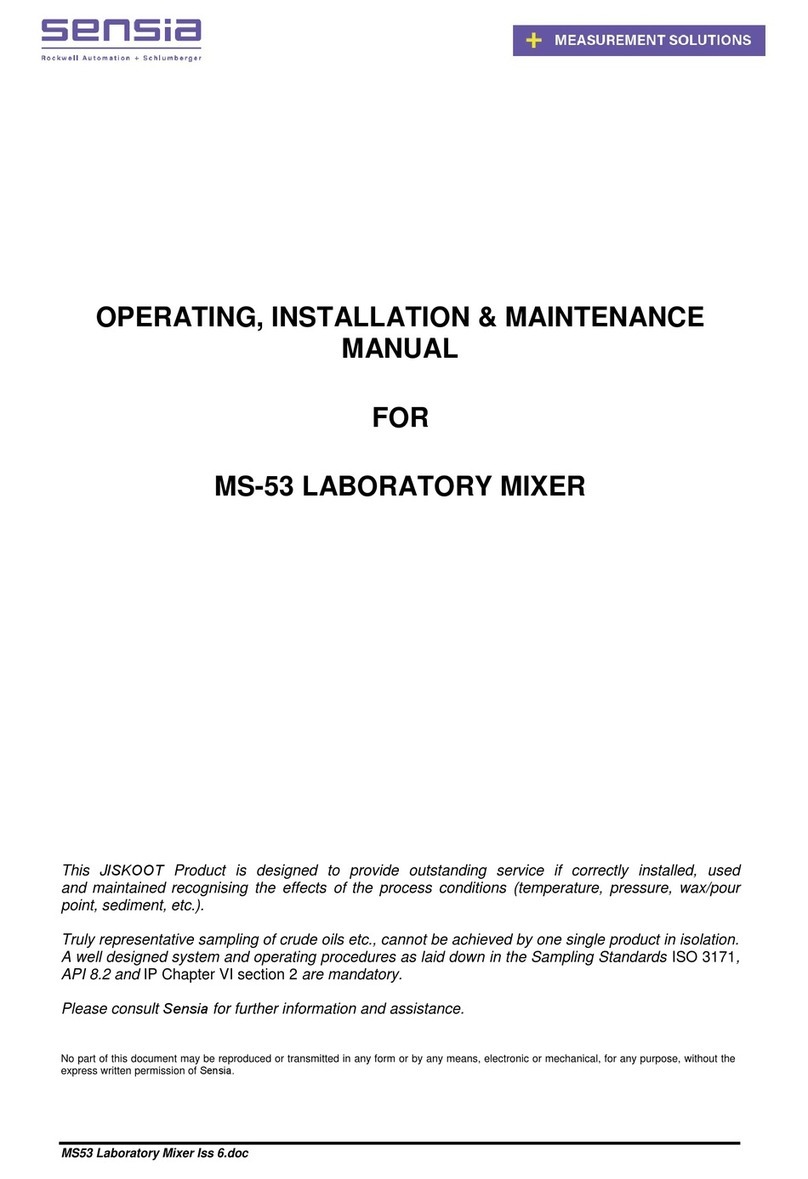
Sensia
Sensia MS-53 Operating, installation & maintenance manual

Thermo Scientific
Thermo Scientific Gibco CTS Rotea user guide
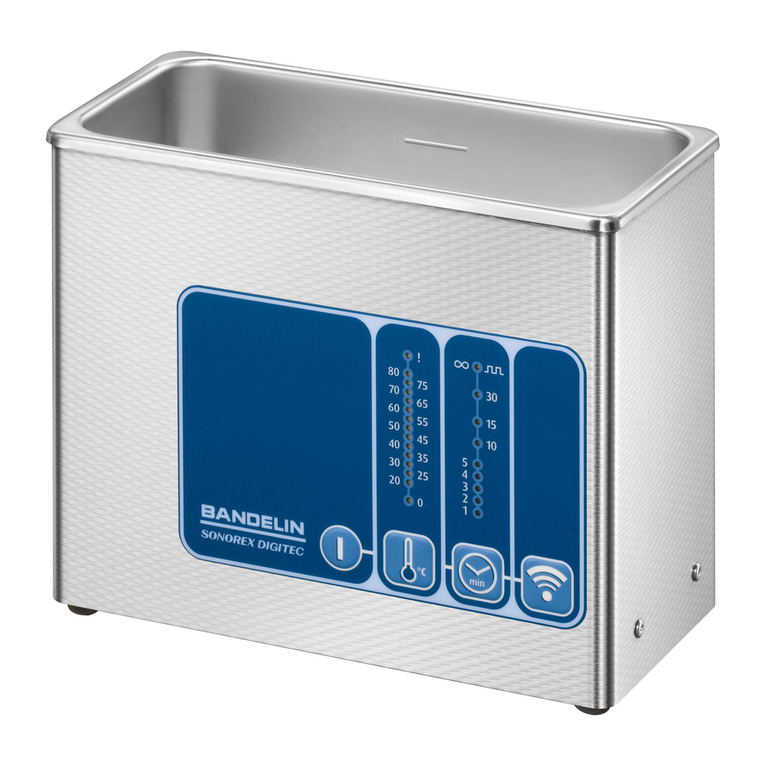
BANDELIN
BANDELIN DT 31 operating manual
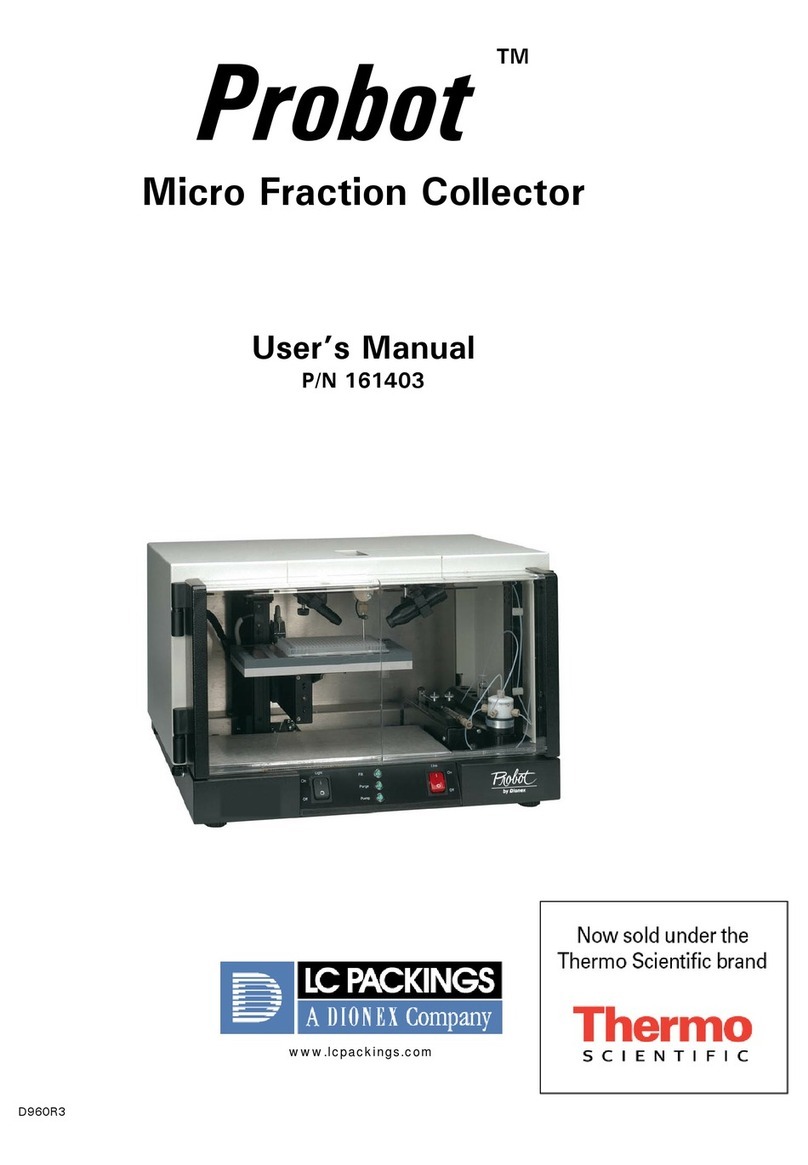
LC Packings
LC Packings Probot 161403 user manual

Leica
Leica TCS SP8 user manual
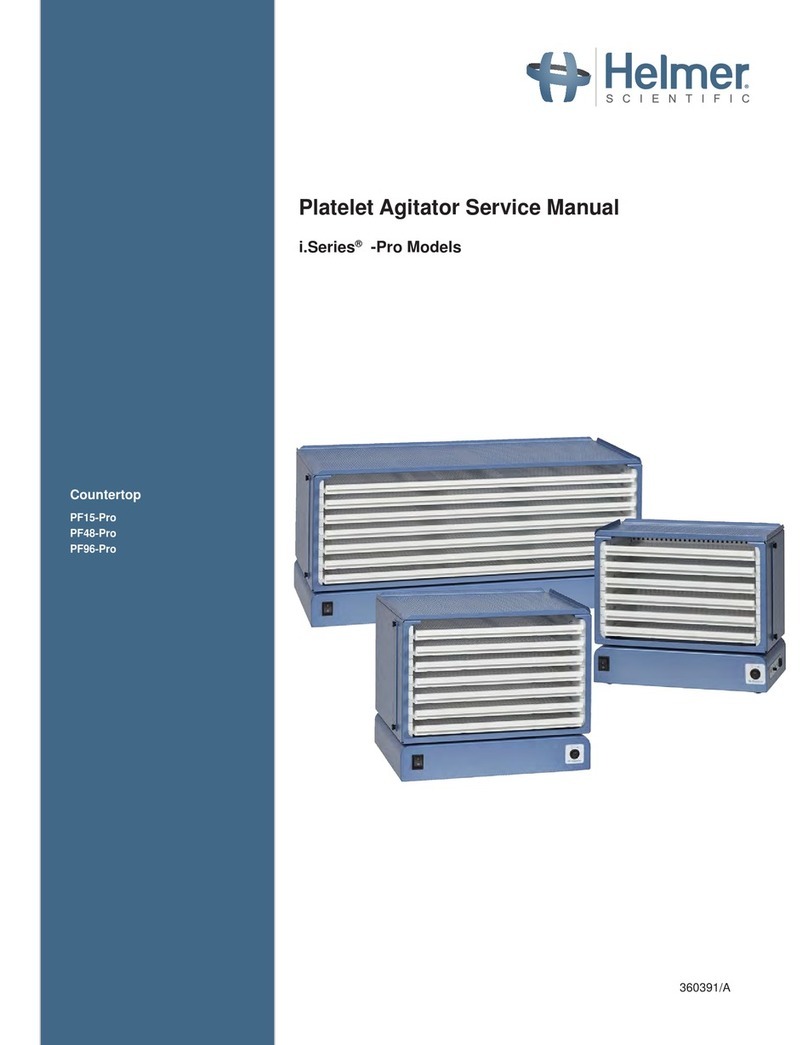
Helmer Scientific
Helmer Scientific i.Series Pro Series Service manual



